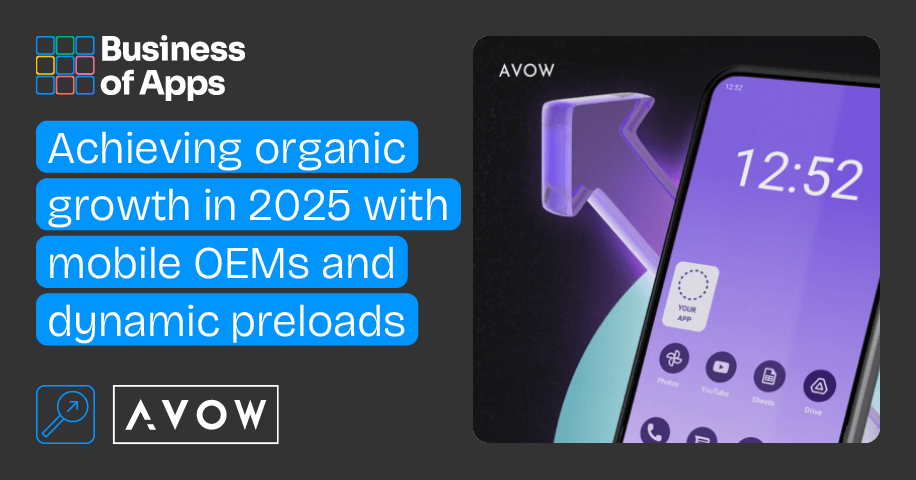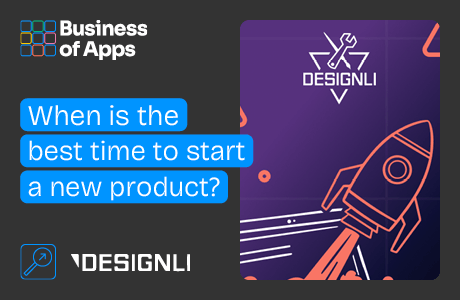As the competition for user attention intensifies, achieving organic growth is no longer just a “nice-to-have” — it’s a critical component for long-term app success. With acquisition costs climbing, organic growth has become the holy grail for app marketers aiming to build sustainable, engaged user bases.
The rise in user acquisition costs
In recent years, the cost of acquiring new users for mobile applications has been steadily increasing, driven by several key factors:
- Intensified market competition: 4.4 million apps grace Google’s and Apple’s App stores combined.
- Evolving privacy regulations: Apple’s App Tracking Transparency (ATT) in iOS 14.5 and Google’s advertising identifier (GAID) deprecation have made targeted advertising more challenging and expensive.
- Escalating digital marketing expenses: Global spending on digital marketing has surged, reaching $362 billion in 2023, and is projected to hit $402 billion in 2024.
- Geographical differences: In North America, the average Cost Per Install (CPI) ranges between $2.50 and $5.00, while in EMEA, it ranges between $1.75 and $4.50.
To mitigate these rising costs, developers are increasingly focusing on organic growth strategies, such as App Store Optimization (ASO) and content marketing, to attract users without relying solely on paid advertising. However, these methods are quickly reaching saturation point.
The importance of organic growth for sustained success
Organic growth is not only important but can affect several critical factors of an app’s organic success. Factors such as:
- Cost-effectiveness: An optimized strategy that incorporates both organic growth strategies and paid advertising is usually very cost-effective, especially in the medium to long term.
- Enhanced user engagement: Users acquired organically often have a genuine interest in the app’s offerings, leading to higher engagement and retention rates as these users actively seek out and choose the app based on its perceived value.
- Improved app store rankings: A steady influx of downloads positively influences an app’s ranking in app stores, increasing its visibility to potential users. Higher rankings can lead to a virtuous cycle of more downloads and further improved rankings.
- Sustainable growth: Steady organic growth can reduce dependence on paid user acquisition, as traditional means of user acquisition can be volatile and expensive. Such sustainable growth fosters a loyal user base that contributes to the app’s longevity and success.
Combining organic growth strategies with paid advertising can help maintain budgets and sustain app success. However, the challenge is finding a balance between the two.
But is there such a channel that combines the holy trinity of cost-effectiveness, organic uplift, and access to a vast untapped audience?
The mobile OEM solution: Organic uplift with dynamic preloads
Enter dynamic preloads. Also known as Google PAI (Play Auto-Install), dynamic preloads are a cost-effective and highly successful solution that provides mobile marketers with that holy trinity they seek. Dynamic preloads, in its simplest form, introduce apps to users when excitement and wanting to try something new is at its peak — when they have unboxed and turned on their brand-new smartphone for the first time.
During setup, users will be presented with apps as recommendations from mobile OEMs such as Xiaomi, Oppo, Vivo, and Transsion, and upon opting in, these apps will be downloaded directly from the Google Play Store in the background as they continue with the setup of their new device. With access to over 1.5 billion daily active users, mobile OEMs are unmatched when providing brands access to a large, untapped, quality audience.
What is organic uplift?
Organic uplift refers to the phenomenon where paid user acquisition efforts lead to an increase in organic app installs. This effect is usually quantified by the ratio of additional organic installs generated per paid install.
Mechanisms driving organic uplift:
- Enhanced app store visibility: Increased download volumes from paid campaigns can boost an app’s ranking in app store charts, making it more visible to potential users browsing the store. This heightened visibility often leads to more organic downloads.
- Improved search rankings: A surge in downloads can positively influence an app’s position in search results within app stores, facilitating easier discovery by users searching for related apps.
- Word-of-mouth and social sharing: Users acquired through paid channels may share the app with friends or on social media, leading to additional organic installs. This “hidden” virality contributes to the organic multiplier effect.
Achieving organic uplift with dynamic preloads
Since dynamic preloads download the apps directly from the Google Play Store, every paid user acquired adds to the download and user numbers in the Play Store. This, in turn, positively affects ranking and discoverability algorithms, which in turn leads to organic uplift. As such, the more successful the dynamic preloads campaign, the greater the organic uplift.
Several questions must be answered for any mobile marketer considering mobile OEMs and dynamic preloads as a channel for effective user acquisition. Questions such as:
- How effective are dynamic preloads in achieving organic uplift?
- Are the organic uplift effects immediate?
- Can organic uplift be sustained throughout the campaign period?
- How different is ASO compared to dynamic preloads in terms of organic growth?
- How easy is it to get started with dynamic preloads?
- Are there any case studies or success stories of apps, both gaming and non-gaming, achieving organic uplift with dynamic preloads?
To answer these questions and more, we launched our new Organic Uplift with Dynamic Preloads Guide! Learn all you need to know about organic uplift and explore real-world data showing apps achieving over 1400% growth in their installs.
Are you ready to give your app the organic uplift it deserves? Access the free guide here.








